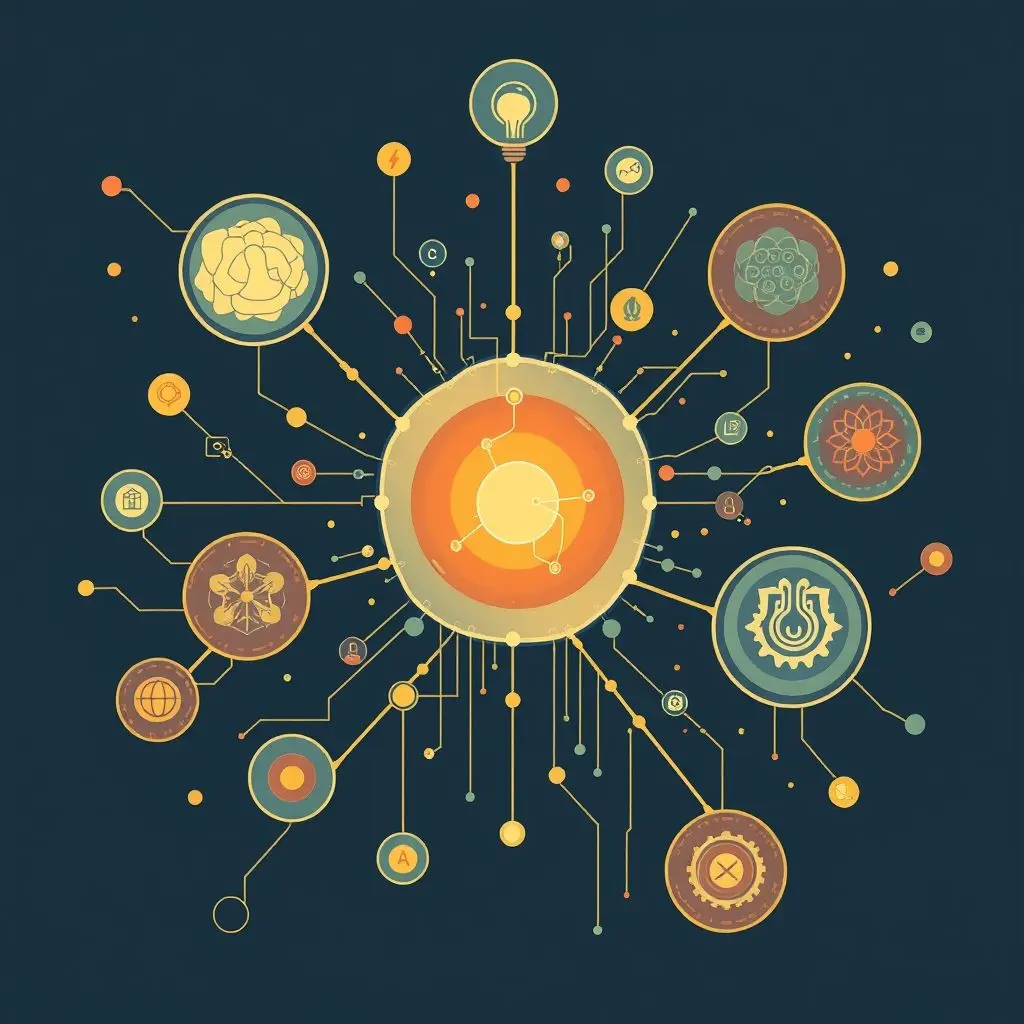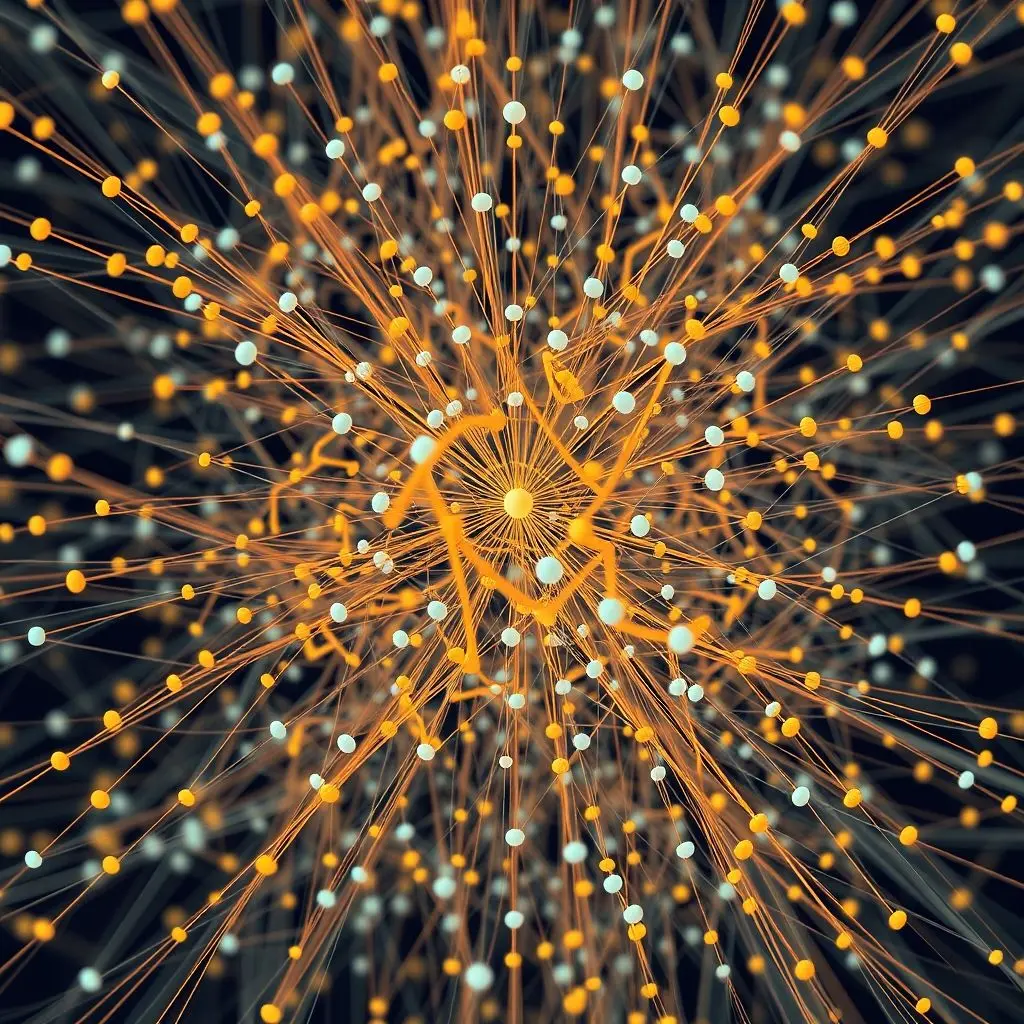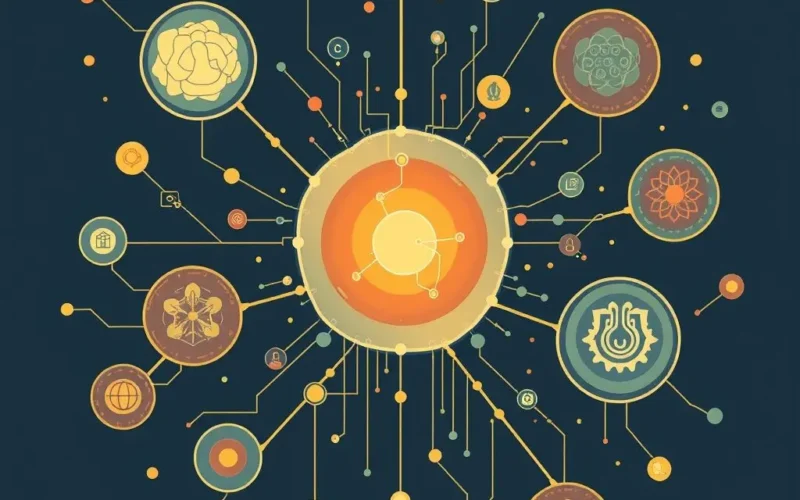Ever find yourself nodding along when someone talks about AI, Machine Learning, and Deep Learning, secretly wishing you had a decoder ring? You’re not alone. These terms are everywhere, often used interchangeably, creating a bit of a conceptual knot. But fear not! Let’s grab our mental scissors and snip through the confusion, much like exploring a simple, elegant Venn diagram.
Before we dive deep into each layer of this tech onion, sometimes a quick visual guide can instantly clear the air. We put together a short video that lays out the core relationship in a snap. Check it out:
Hopefully, that gave you a quick grasp of the nested relationship. Now, let’s elaborate on each piece of the puzzle, starting with the biggest picture.
Table of Contents
The Grand Vision: Artificial Intelligence (AI)
Imagine a machine that can see, hear, understand, and even reason or make decisions, much like a human. That’s the audacious, overarching goal of Artificial Intelligence. At its core, AI is a broad field of computer science dedicated to creating systems capable of performing tasks that typically require human intelligence.
Think of AI not as a single technology, but as a massive umbrella concept. Under this umbrella are various approaches, methodologies, and technologies aimed at enabling machines to exhibit intelligent behavior. This could range from simple tasks like playing chess or sorting emails to complex ones like driving a car or diagnosing a medical condition.
Historically, AI research has explored many paths, from symbolic reasoning (trying to represent knowledge using rules and logic) to connectionist approaches (like neural networks). The dream is often to achieve Artificial General Intelligence (AGI), a hypothetical AI that possesses cognitive abilities comparable to or surpassing those of humans across virtually all tasks. Most AI we see today is Artificial Narrow Intelligence (ANI), designed to perform a specific task extremely well, like recognizing faces or powering voice assistants.
AI is the foundation, the initial spark of an idea: building smart machines.

Learning from Experience: Machine Learning (ML)
Nested comfortably within the vast realm of AI is Machine Learning. While AI is about *making* machines intelligent, ML is one of the *primary ways* we achieve that intelligence in practice today, particularly when dealing with data. Instead of programming explicit rules for every possible scenario, ML algorithms allow computers to learn from data.
Think of it like teaching a child by showing them examples. You show them many pictures of cats and dogs and tell them which is which. Eventually, they learn to distinguish cats from dogs on their own when shown a new picture. Machine Learning works similarly: algorithms are fed large datasets, and through statistical techniques, they identify patterns, correlations, and relationships within that data.
This learning process allows the machine to make predictions, classifications, or decisions on new, unseen data without being explicitly programmed for those specific inputs. This is incredibly powerful for tasks where the rules are too complex or too numerous to code manually, such as predicting stock prices, filtering spam emails, recommending products, or identifying anomalies in network traffic.
There are several major types of Machine Learning:
- Supervised Learning: The algorithm learns from labeled data (input-output pairs). Examples: image classification (pictures labeled ‘cat’ or ‘dog’), regression (predicting house prices based on features).
- Unsupervised Learning: The algorithm learns from unlabeled data, finding hidden patterns or structures. Examples: clustering customers into segments, anomaly detection.
- Reinforcement Learning: The algorithm learns by interacting with an environment, receiving rewards or penalties for its actions, aiming to maximize cumulative reward. Examples: training game-playing AI, robotics.
Machine Learning is a powerful engine within AI that enables systems to improve performance on a task over time through experience (data).

Deep Understanding Through Layers: Deep Learning (DL)
Now, let’s zoom in even further, burrowing deep inside the Machine Learning circle. Here you’ll find Deep Learning. Deep Learning is a subset of Machine Learning that uses a specific type of algorithm: artificial neural networks with multiple layers (hence ‘deep’).
Inspired loosely by the structure and function of the human brain’s interconnected neurons, neural networks consist of layers of nodes (neurons) that process information. In a traditional neural network or simpler ML model, there might be just an input layer, one or two hidden layers, and an output layer. Deep Learning networks, however, have many hidden layers – often dozens or even hundreds.
Why is ‘deep’ important? These multiple layers allow the network to learn hierarchical representations of data. Each layer processes the output of the previous layer, gradually extracting more complex and abstract features. For example, in image recognition, the first layer might detect edges, the next might detect shapes, the next might recognize parts of objects (like an eye or a wheel), and subsequent layers combine these to recognize a full object (a face or a car).
This ability to automatically learn intricate features from raw data (like pixels in an image or audio waveforms) is what gives Deep Learning its power and makes it particularly effective for tasks involving large amounts of unstructured data. It has revolutionized fields like:
- Computer Vision: Facial recognition, object detection in autonomous vehicles.
- Natural Language Processing (NLP): Language translation, sentiment analysis, chatbots.
- Speech Recognition: Voice assistants like Siri or Alexa.
- Drug Discovery and Genomics: Analyzing complex biological data.
Deep Learning requires massive datasets and significant computational power to train, but when successful, it can achieve state-of-the-art results on highly complex problems.

Visualizing the Relationship: The Nested Circles
So, bringing it all together, we see a clear hierarchy:
- Artificial Intelligence (AI): The broadest concept. The goal of creating machines that can mimic human intelligence.
- Machine Learning (ML): A major subset of AI. A set of techniques that enable machines to learn from data without explicit programming.
- Deep Learning (DL): A subset of Machine Learning. Specific techniques within ML that use deep neural networks with multiple layers to learn complex patterns.
Think of it like Russian nesting dolls: AI is the largest doll, ML is a smaller doll nested inside AI, and DL is the smallest doll nested inside ML. Every Deep Learning system is a Machine Learning system, and every Machine Learning system is an AI system. However, not all AI is ML (e.g., older symbolic AI), and not all ML is DL (e.g., simpler linear regression or decision trees).

Why Understanding This Distinction Matters
Beyond just clearing up jargon, grasping the relationship between AI, ML, and DL is important for several reasons:
- Choosing the Right Tools: Knowing which techniques fall under which umbrella helps in selecting appropriate algorithms and technologies for a specific problem. Not every problem requires Deep Learning; sometimes simpler ML methods suffice and are more efficient.
- Effective Communication: Being precise with terminology ensures clearer discussions with colleagues, clients, or stakeholders in the tech space.
- Following Technology Trends: Understanding the evolution from AI concepts to practical ML applications and the recent surge in DL capabilities helps make sense of news and advancements in the field.
- Career Paths: Different roles and specializations exist within AI, ML, and DL, each requiring distinct skill sets.
Frequently Asked Questions (FAQs)
Q: Is all Machine Learning Artificial Intelligence?
A: Yes, generally speaking, Machine Learning is considered a subfield and a method for achieving Artificial Intelligence. If a system learns from data to perform a task that requires intelligence, it falls under the AI umbrella.
Q: Is all Deep Learning Machine Learning?
A: Absolutely. Deep Learning is a specific type of Machine Learning that uses deep neural networks. All deep learning models are machine learning models.
Q: Can you have AI without Machine Learning or Deep Learning?
A: Yes. While ML and DL are the dominant approaches to AI today, earlier forms of AI relied on symbolic reasoning, expert systems, and rule-based logic that did not involve learning from data in the ML sense. So, AI is a broader concept than ML or DL.
Q: Are neural networks the same as Deep Learning?
A: Deep Learning uses neural networks, but specifically deep neural networks (those with many layers). Simple neural networks with only a few layers have been around for a while and are considered a form of Machine Learning, but not necessarily Deep Learning. The ‘deep’ aspect refers to the architecture’s complexity.
Q: Which is ‘better’ – ML or DL?
A: Neither is inherently ‘better’; they are tools for different situations. Deep Learning excels with large amounts of unstructured data (images, audio, text) and complex pattern recognition, often achieving higher accuracy on such tasks given enough data and computational power. However, for smaller datasets, structured data, or problems where interpretability is crucial, traditional ML algorithms might be more suitable and efficient.
Navigating the Landscape
So there you have it. What might have seemed like a confusing alphabet soup of tech terms boils down to a simple, nested relationship. AI is the grand vision, ML is a powerful way to achieve it through learning from data, and DL is a cutting-edge technique within ML leveraging deep neural networks for complex challenges.
As technology continues to evolve, these fields will undoubtedly grow and perhaps even birth new subsets. But understanding this fundamental Venn diagram provides a solid foundation for making sense of the increasingly intelligent world around us. Keep exploring, keep learning, and stay curious!




